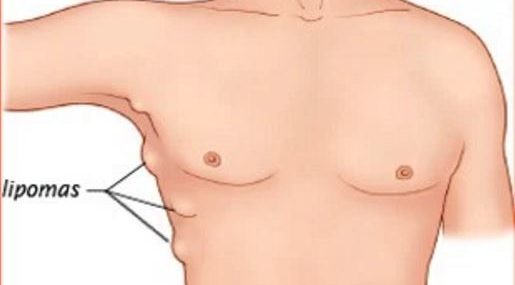Everything you need to know about Lipoma
A lipoma is a growth of fatty tissue that slowly develops under your skin. People of any age can develop a lipoma, but children rarely develop them. A lipoma can form on any part of the body but they typically appear on the neck, shoulders, back, abdomen, arms and thighs. They are classified as benign growths, or tumors, of fatty tissue. This means a lipoma isn’t cancerous and is rarely harmful.
What are some Symptoms of lipoma?

There are many types of skin tumors, but a lipoma usually has distinct characteristics. If you suspect that you have a lipoma it will generally:
- Be soft to the touch
- Move easily if prodded with your finger
- Be just under the skin
- Be pale
- Be colorless
- Grow slowly
Lipomas are most commonly located in the neck, back, and shoulders, but they can also occur on the stomach, thighs, and arms. The lipoma is only painful if it grows into nerves underneath the skin. You should call your doctor if you notice any changes in your skin. Lipomas can look very similar to a cancerous condition called liposarcoma.
Here are some of the risk factors for developing a lipoma?
Even though causes of lipoma are unknown, your risk of developing this type of skin lump increases if you have a family history of lipomas.
This condition is most prevalent in adults between the ages of 40 and 60.
Certain conditions may also increase your risk of lipoma development. These include adiposis dolorosa, Cowden syndrome, Gardner’s syndrome and Madelung’s disease.
Diagnosis of Lipoma

Doctors can only diagnose a lipoma by performing a physical exam. It feels soft and isn’t painful. Also, since it’s made up of fatty tissues, the lipoma moves easily when touched.
A dermatologist might take a biopsy of the lipoma. During the procedure, they’ll scrape a small portion of the tissue and send it to a lab for testing. This test is done to rule out the possibility of cancer.
How is Lipoma Treated?
A lipoma that isn’t left alone usually doesn’t cause any problem. However, your dermatologist can treat the lump if it is bothersome. The surgeon will make the best treatment recommendation based on a variety of factors including:
- The size of the lipoma
- The number of skin tumors you have
- Your personal history of skin cancer
- Your family history of skin cancer
- Whether the lipoma is painful
Surgery is the most common way to treat a lipoma which is done. This is especially helpful if you have a large skin tumor that’s still growing. Lipomas rarely grow back once they’re surgically removed.

Some of the outlook for someone with a Lipoma
Lipomas are benign tumors. This means that there’s no chance that an existing lipoma will spread. The condition will not spread through muscles or any other surrounding tissues and it isn’t life-threatening.
Lipoma cannot be reduced by self-care. Ice and heat packs may work for other types of skin lumps, but they aren’t helpful for lipomas because they’re fat-based.
Dr. Ashok Pandey from Bombay Cosmetic Clinic is a celebrated and revered personality in the field of cosmetic surgery. Currently conducting his cosmetic and aesthetic surgery practice in Navi Mumbai, he is associated with number of leading hospitals across the city where he regularly imparts his services to the needy.
Such is his expertise in his field of knowledge that he has successfully conducted more than thousand cosmetic practicing in South Mumbai and Navi Mumbai and plastic surgeries in his career so far.
For consultation call – 099307 31109 / 022 27801101


